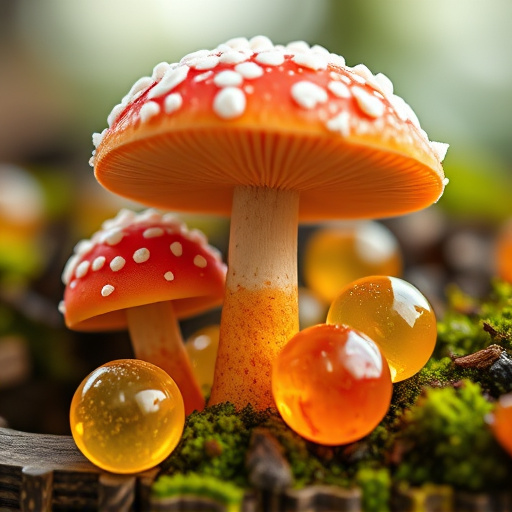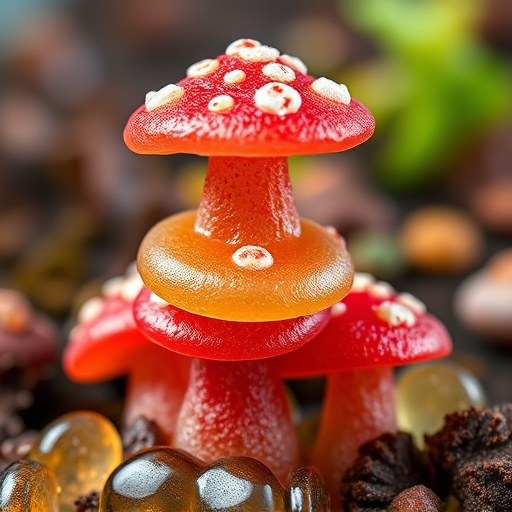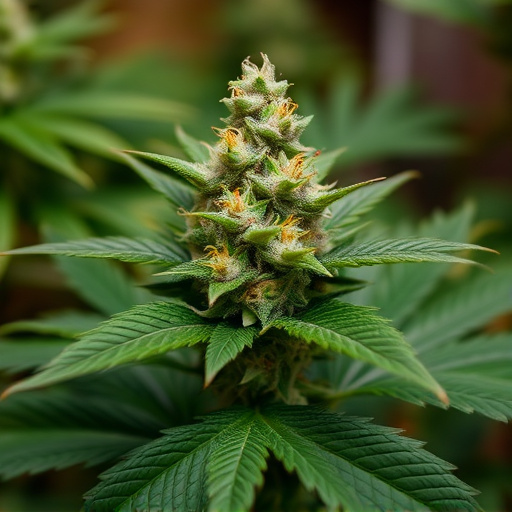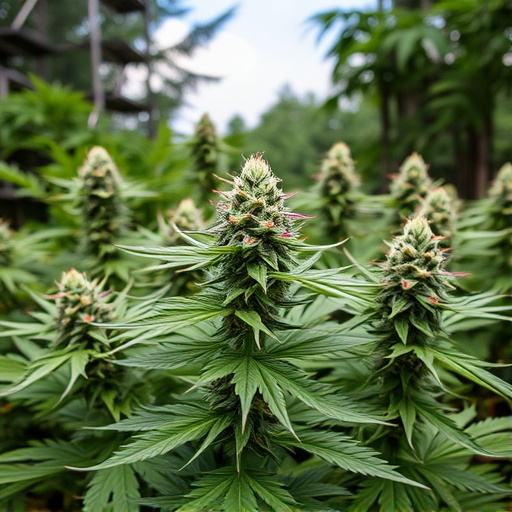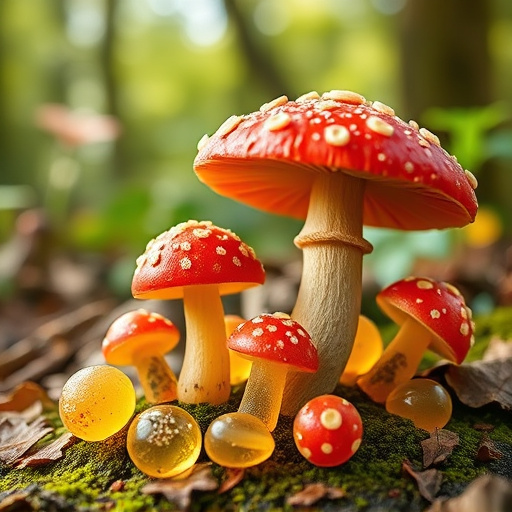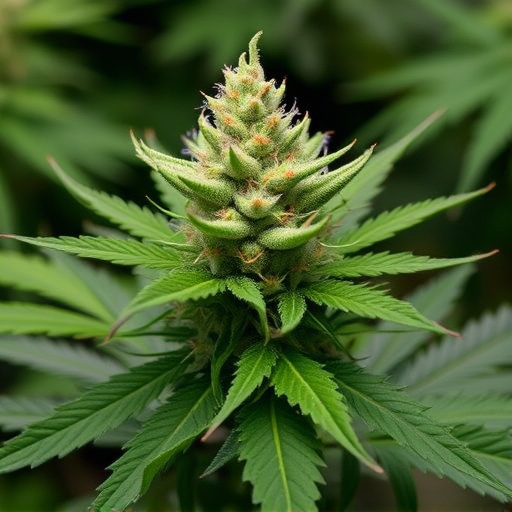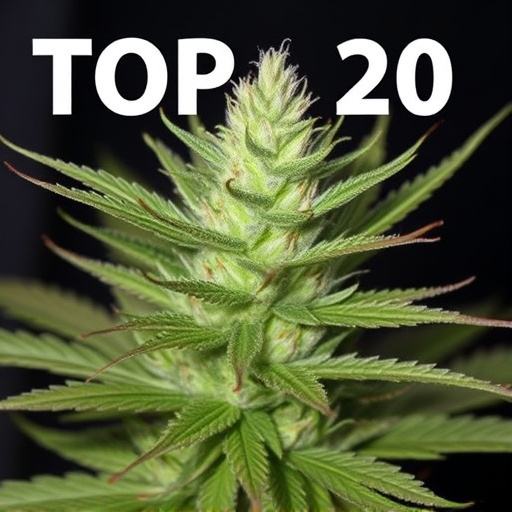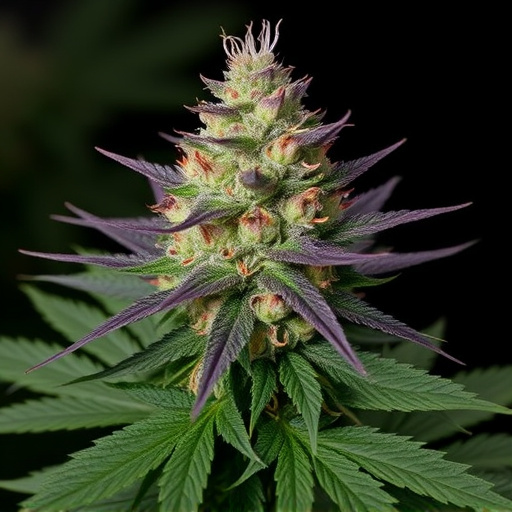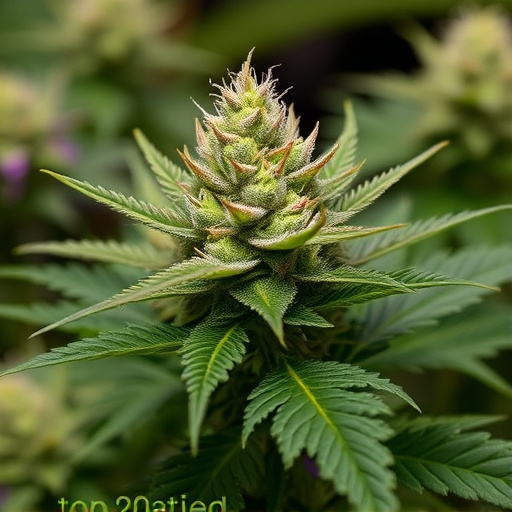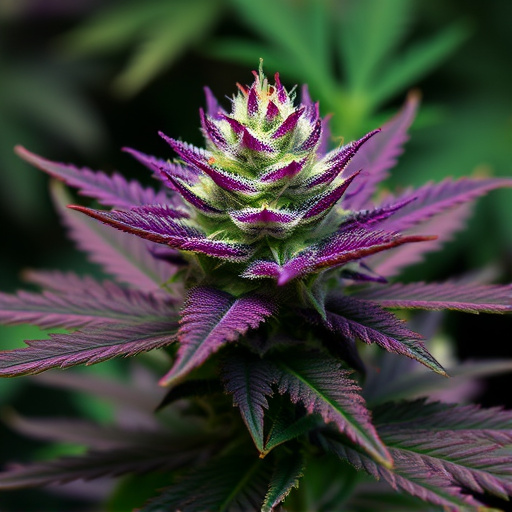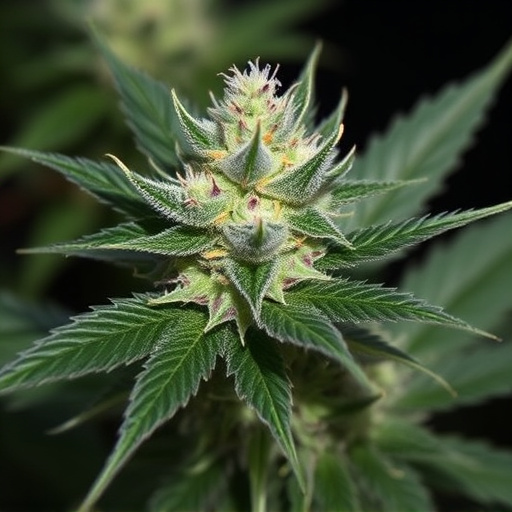The therapeutic potential of cannabis is rooted in its complex chemical profile, including cannabinoids like THC and CBD, terpenes, and flavonoids. The top 20 cannabis strains offer diverse medical benefits tailored to specific conditions, from pain relief and sleep aid to anxiety reduction and enhanced focus. These strains, bred for their unique cannabinoid compositions, are reshaping the medical cannabis landscape as science validates their efficacy through research into the endocannabinoid system and its interaction with compounds like THC and CBD.
Cannabis flowers have gained significant attention for their potential medical benefits, driving interest in understanding their unique chemical composition. This article delves into the science behind cannabis’ efficacy, highlighting the top 20 strains known for specific medicinal properties. From reducing anxiety and pain to alleviating symptoms of conditions like epilepsy and multiple sclerosis, these strains offer a promising glimpse into the future of medicine. By exploring both the chemistry and scientific evidence, we uncover the potential game-changing role of cannabis in healthcare.
- Understanding Cannabis Flowers and Their Chemical Composition
- The Top 20 Cannabis Strains for Medical Use and Their Benefits
- Exploring the Scientific Evidence Behind Cannabis' Medical Efficacy
Understanding Cannabis Flowers and Their Chemical Composition

Cannabis flowers, also known as bud or cannabis sativa, are the most well-known and sought-after parts of the plant for medical purposes. These delicate blooms are rich in a diverse range of chemical compounds that contribute to their therapeutic effects. The key to understanding cannabis’s medical benefits lies in its chemical composition, specifically the presence of cannabinoids, terpenes, and flavonoids.
Among these, cannabinoids are arguably the most celebrated, with tetrahydrocannabinol (THC) and cannabidiol (CBD) being the most well-known. THC is responsible for the plant’s psychoactive properties, while CBD offers a wide range of potential medical advantages without the mind-altering effects. The top 20 cannabis strains are often selected and cultivated based on their unique cannabinoid profiles, ensuring specific benefits for various conditions. Terpenes, aroma compounds found in essential oils, also play a role by enhancing or altering the effects of cannabinoids, making each strain’s medicinal profile distinctive.
The Top 20 Cannabis Strains for Medical Use and Their Benefits
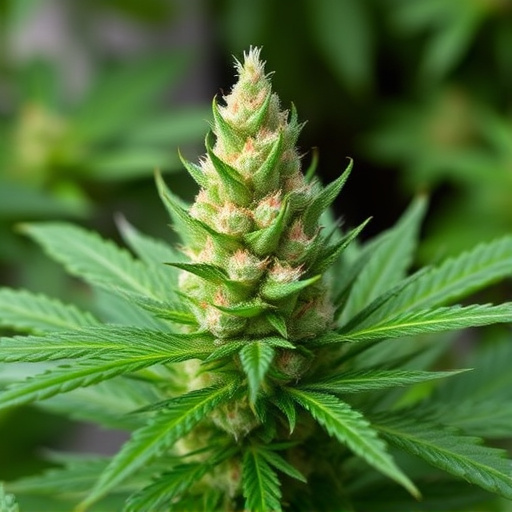
The world of medical cannabis is vast, with countless strains offering unique therapeutic properties. When seeking specific benefits, knowing the top 20 cannabis strains can be incredibly helpful for patients and healthcare providers alike. Here’s an overview of some of the most popular varieties:
1. Blue Dream: Known for its potent THC levels and relaxing effects, Blue Dream is often recommended for insomnia, anxiety, and chronic pain. Its uplifting and euphoric high makes it a favorite among medical users.
2. Acai Berry: This strain has a distinct fruity aroma and offers a balanced combination of CBD and THC, ideal for reducing inflammation and alleviating muscle spasms without overwhelming the system.
3. Granddaddy Purple: With its rich, purple hues, this strain provides a deep relaxation experience, making it beneficial for managing stress and post-traumatic stress disorder (PTSD).
4. Lemon Haze: As the name suggests, Lemon Haze offers a bright, citrusy flavor and is known to boost mood while providing pain relief, making it suitable for patients with depression or fibromyalgia.
5. Charlotte’s Web: Highly sought after for its high CBD content, Charlotte’s Web is celebrated for its potential in treating epilepsy and reducing anxiety without causing a strong intoxicating effect.
6. Northern Lights: Popular for its fast-acting relief from chronic pain, Northern Lights induce a sense of calm and is often used to manage sleep disorders.
7. Bubble Gum: This sweet and playful strain provides a gentle high, making it suitable for beginners or those seeking light relaxation without cognitive impairment.
8. Super Silver Haze: A powerful sativa known for its ability to stimulate creativity and focus while alleviating symptoms of multiple sclerosis (MS).
9. Indica Dominant Strains (e.g., Granddaddy Purple, AFG (Afghani)): These strains are renowned for their sedative effects, helping patients with insomnia or severe anxiety unwind at the end of the day.
10. Sativa Dominant Strains (e.g., Jack Herer, Super Silver Haze): Ideal for daytime use, these varieties enhance energy levels and cognitive function while uplifting mood.
11. Harlequin: A unique strain with a 1:1 CBD-to-THC ratio, Harlequin is celebrated for its potential in treating inflammation, chronic pain, and anxiety without psychotropic effects.
12. Pina Colada: This tropical blend offers both relaxation and a boost of energy, making it suitable for patients who need to stay active while managing stress or mild depression.
13. Ghost Pepper: Known for its intense flavor and heat, Ghost Pepper has high THC levels and is recommended for severe pain, especially neuropathic conditions.
14. Green Crack (or Pineapple Express): A powerful sativa with uplifting effects, it’s often used to combat fatigue, depression, and stress-related disorders.
15. Kush: With its heavy resin production, Kush provides a deep relaxation experience and is sought after for insomnia and muscle relaxant properties.
16. Super Bud (or Super Skunk): High in THC, this strain offers potent pain relief and is effective for treating chronic conditions like arthritis or fibromyalgia.
17. Purple Haze: A classic indica-sativa hybrid, Purple Haze provides a euphoric high while easing tension and muscle spasms.
18. Red Dragon: This rare strain has a distinct spicy aroma and is known for its potent pain-relieving properties and uplifting mood effects.
19. Blue Magic: With a unique, sweet flavor profile, Blue Magic offers intense relaxation and is often used to manage PTSD and severe anxiety.
20. Trainwreck: As the name suggests, this strain provides a powerful “train wreck” effect of euphoria, pain relief, and enhanced sensory perception, making it a popular choice for those seeking intense yet balanced experiences.
Exploring the Scientific Evidence Behind Cannabis' Medical Efficacy
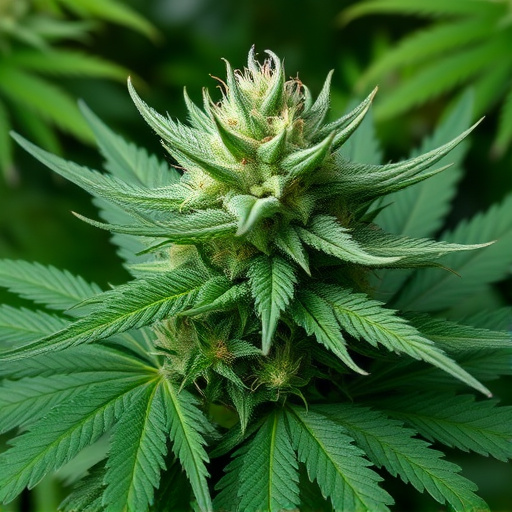
The scientific community has increasingly turned its attention to understanding the medical potential of cannabis, and the evidence is starting to paint a compelling picture. Numerous studies have explored various aspects of this plant’s efficacy, from its pain-relieving properties to its anti-inflammatory effects and ability to reduce anxiety. One of the key components driving these findings is tetrahydrocannabinol (THC), one of over 100 cannabinoids found in cannabis. THC has been shown to interact with the endocannabinoid system (ECS) in our bodies, which plays a crucial role in regulating mood, memory, and pain perception.
While the top 20 cannabis strains vary in their cannabinoid profiles, many have been specifically bred for medicinal use, offering unique combinations of THC and cannabidiol (CBD). CBD, another prominent cannabinoid, has gained significant attention for its potential to alleviate symptoms without inducing the psychoactive effects associated with THC. This makes certain strains appealing for patients seeking medical relief from various conditions, including chronic pain, epilepsy, and anxiety disorders. The growing body of research suggests that cannabis could offer a natural alternative or complementary therapy for many health issues, providing hope for those looking to explore non-conventional treatments.
Cannabis flowers offer a wide range of medical benefits backed by growing scientific evidence. Understanding the chemical composition and exploring specific strains, like those featured in our list of the top 20 cannabis strains for medical use, can help patients navigate this powerful natural resource effectively. As research continues to uncover more about cannabis’ efficacy, it’s clear that this plant holds significant promise for various healthcare applications.


